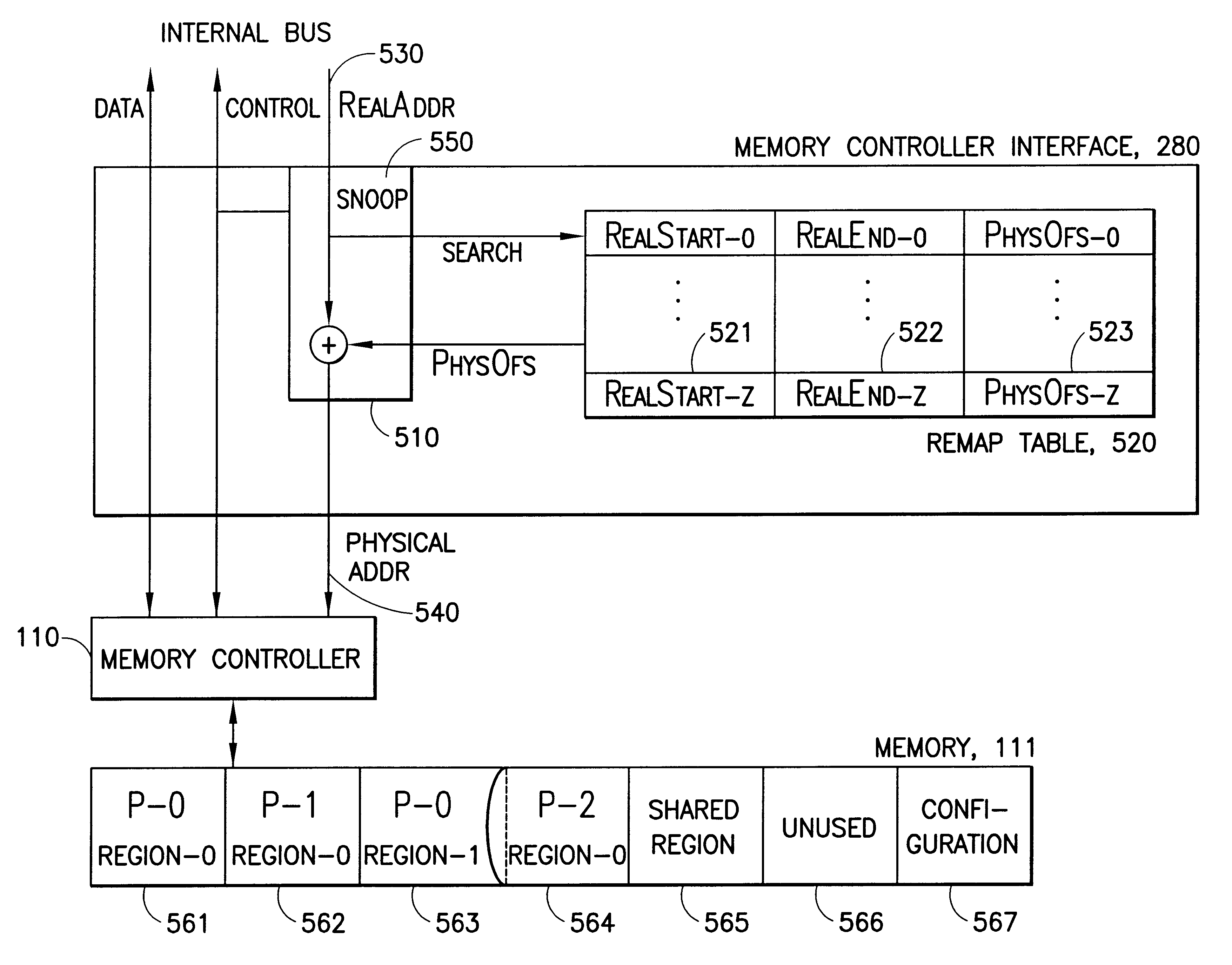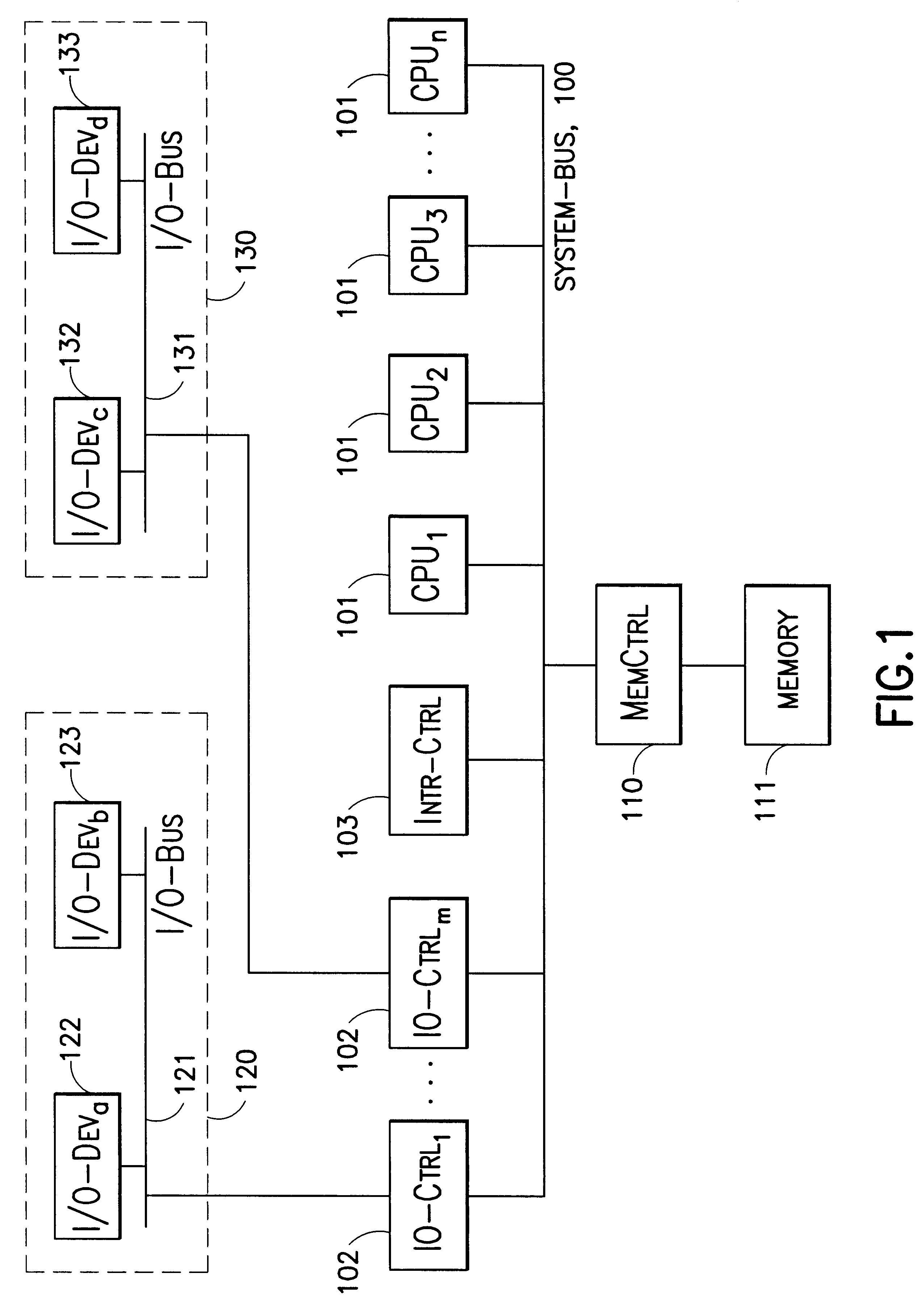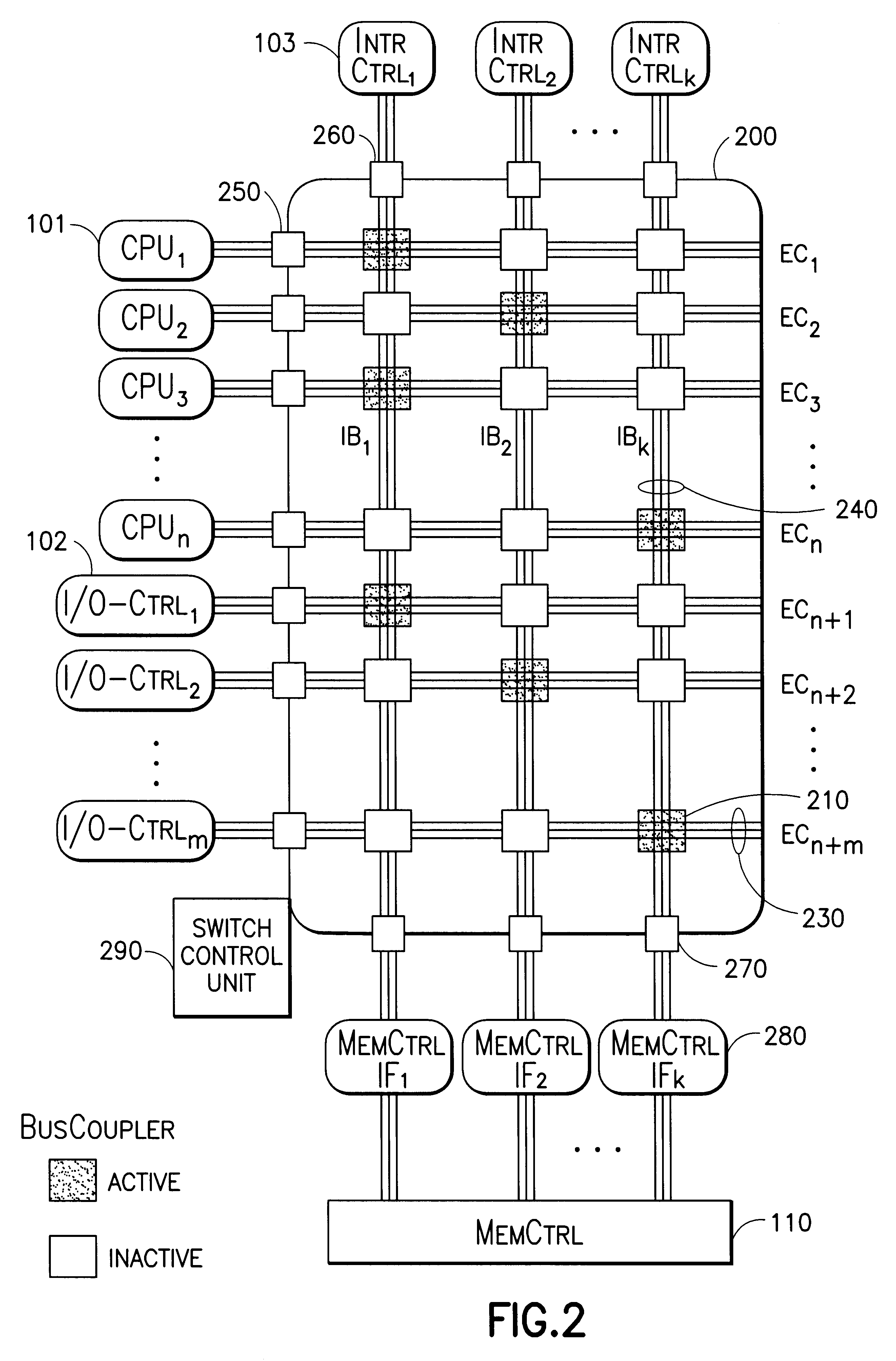Secure partitioning of shared memory based multiprocessor system
- Summary
- Abstract
- Description
- Claims
- Application Information
AI Technical Summary
Benefits of technology
Problems solved by technology
Method used
Image
Examples
Embodiment Construction
The general architecture and apparatus in a preferred embodiment is shown in FIG. 2. It consists of a bus-coupling crossbar switch (200). The crossbar switch provides a set of internal buses IB.sub.1, IB.sub.2, . . . , IB.sub.k (240). These buses replicate the system bus (100) typically found in a shared memory based system depicted in FIG. 1. Each of these internal buses IB.sub.i carries all signals of the system bus, i.e. address lines, data lines and control lines. The presence of these three classes is emphasized in the drawing of (240). The number k of internal buses determines the number of partitions that are supported by the crossbar switch.
In addition to the replicated internal system buses, the crossbar switch (200) provides a set of external connector buses EC.sub.1, EC.sub.2, . . . EC.sub.n+m (230). Each EC.sub.j (230) provides the same address lines, data lines and control lines as the internal system buses. A single system component, either a CPU (101) or a I / O Control...
PUM
 Login to View More
Login to View More Abstract
Description
Claims
Application Information
 Login to View More
Login to View More - R&D
- Intellectual Property
- Life Sciences
- Materials
- Tech Scout
- Unparalleled Data Quality
- Higher Quality Content
- 60% Fewer Hallucinations
Browse by: Latest US Patents, China's latest patents, Technical Efficacy Thesaurus, Application Domain, Technology Topic, Popular Technical Reports.
© 2025 PatSnap. All rights reserved.Legal|Privacy policy|Modern Slavery Act Transparency Statement|Sitemap|About US| Contact US: help@patsnap.com



